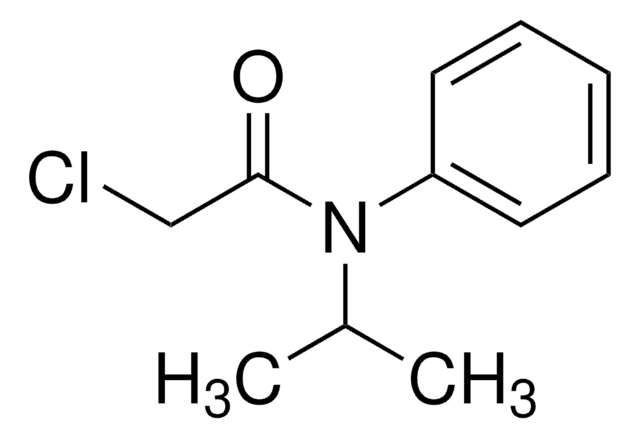33890
PCB No 209 solution
10 μg/mL in heptane, analytical standard
Synonim(y):
Decachlorobiphenyl solution, 2,2′,3,3′,4,4′,5,5′,6,6′−PCB
About This Item
Polecane produkty
klasa czystości
analytical standard
okres trwałości
limited shelf life, expiry date on the label
stężenie
10 μg/mL in heptane
metody
HPLC: suitable
gas chromatography (GC): suitable
Zastosowanie
environmental
format
multi-component solution
temp. przechowywania
2-8°C
ciąg SMILES
Clc1c(Cl)c(Cl)c(c(Cl)c1Cl)-c2c(Cl)c(Cl)c(Cl)c(Cl)c2Cl
InChI
1S/C12Cl10/c13-3-1(4(14)8(18)11(21)7(3)17)2-5(15)9(19)12(22)10(20)6(2)16
Klucz InChI
ONXPZLFXDMAPRO-UHFFFAOYSA-N
Szukasz podobnych produktów? Odwiedź Przewodnik dotyczący porównywania produktów
Zastosowanie
produkt powiązany
Hasło ostrzegawcze
Danger
Zwroty wskazujące rodzaj zagrożenia
Zwroty wskazujące środki ostrożności
Klasyfikacja zagrożeń
Aquatic Acute 1 - Aquatic Chronic 1 - Asp. Tox. 1 - Flam. Liq. 2 - Skin Irrit. 2 - STOT SE 3
Organy docelowe
Central nervous system
Kod klasy składowania
3 - Flammable liquids
Klasa zagrożenia wodnego (WGK)
WGK 2
Temperatura zapłonu (°F)
24.8 °F - closed cup
Temperatura zapłonu (°C)
-4 °C - closed cup
Środki ochrony indywidualnej
Eyeshields, Faceshields, Gloves, type ABEK (EN14387) respirator filter
Choose from one of the most recent versions:
Masz już ten produkt?
Dokumenty związane z niedawno zakupionymi produktami zostały zamieszczone w Bibliotece dokumentów.
Nasz zespół naukowców ma doświadczenie we wszystkich obszarach badań, w tym w naukach przyrodniczych, materiałoznawstwie, syntezie chemicznej, chromatografii, analityce i wielu innych dziedzinach.
Skontaktuj się z zespołem ds. pomocy technicznej









